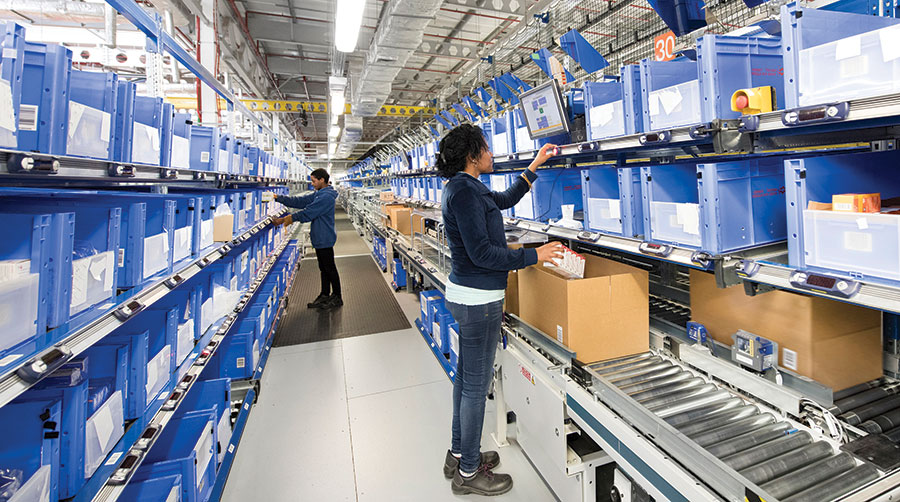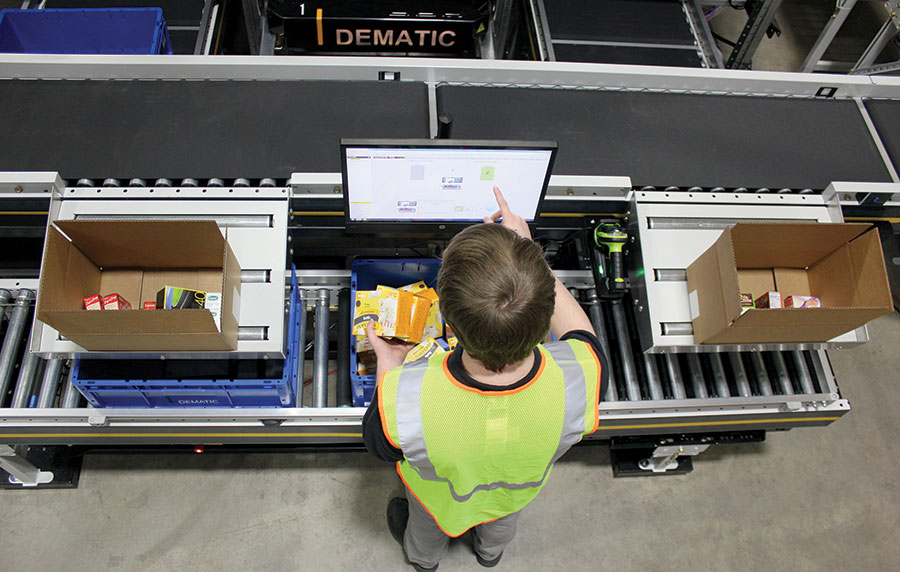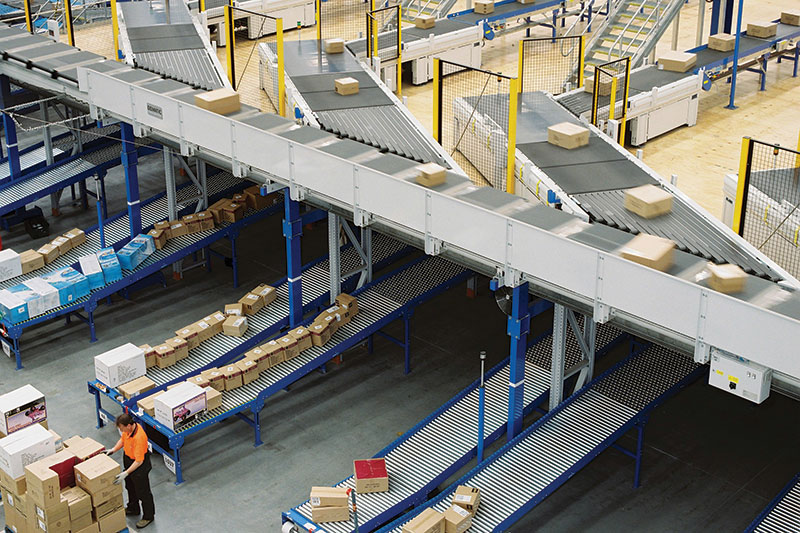Retail comes out swinging
As retailers rebuild their distribution schemes as quickly as possible, they are still behind the curve when it comes to how the role of stores is changing and the enormous surge in e-commerce. A little empathy is actually in order, even when you can’t buy exactly what you want when you want it. Patience remains a virtue.
To say it’s been a rough year for retail ranks as a Top 10 understatement of 2020.
It is estimated that at least 25,000 retail store locations of all shapes and sizes closed last year—few voluntarily. And while Covid was a major driver in many retail chain bankruptcies in 2020, the die was already cast for a seismic shift in retail. In 2019, more than 9,000 stores closed, nearly a 60% increase over 2018. That’s an easy trendline to track.
Meanwhile, e-commerce surged 45% in Q2 of 2020. What?
This is about as disruptive as retail can get. “It’s quite a leap to go from expected 14% to 15% annual growth in e-commerce to 45% in a single quarter. How does any DC absorb that?” asks Dan Gilmore, chief of marketing at Softeon.
That was followed by additional enormous surges in the Black Friday/Cyber Monday stretch. At the same time, foot traffic at retail stores on Black Friday was estimated to be off more than 50%. In-store and curbside pickup of online purchases were up more than 50%.
Quite simply, e-commerce posted a multi-year surge in just nine months.
“The U.S. consumer is in the middle of the largest shift in shopping behavior in the last 50 years.” That’s what Hilding Anderson, head of retail strategy in North America at consultant Publicis Sapient told Bloomberg in mid-November.
The confluence of all these major changes is forcing retailers to re-examine what they have on their hands—both brick-and-mortar and e-commerce—with a new strategic eye these days.
What retailers are talking about
“Companies are now evaluating all of their supply chain investments from stores to DCs. E-commerce may be booming, but it’s not the only driver of retail these days. It is, in fact, just one piece of the retail puzzle,” says Diana Mueller, account executive at Fortna.
From what she has seen, Mueller says retailers are split on how to be competitive in the next five to 10 years. That means they’re trying to figure out how to balance the assets they have, and how best to leverage all of them both during and after Covid. Quite simply, what is their competitive advantage, and how do they leverage it and future investments in a time of such enormous shifts?

Agility to process a flood of orders is the order of the day for retailer DCs.
The role that stores and DCs will play now and going forward is at the core of how retail is changing. “More than anything else, retailers need to invest in agility,” says Bryan Jensen, chairman and executive vice president at St. Onge. He continues to say that this is not agility at all costs.
“The trick is to decide how much investment is actually needed,” says Jensen. “It isn’t easy to optimize capital expenditures these days because it is so stepwise.” With 2020 in the rearview mirror, he looks at 2021 as a hybrid year with vaccines opening up many aspects of life in the second half of the year. This will, in turn, affect retail patterns that will change again as we enter 2022.
“Ultimately, retailers are trying to make good software and equipment decisions that will peak when retail patterns level out and become more predictable,” Jensen adds.
“This is a time of mid to high stress for retailers,” Mueller adds. “And that stress won’t abate until retailers have new strategies, buildings, equipment and technology in place,” she adds. This is going to take a while.
Other changes in the supply chain
Mueller also notes that not just the subject of the conversation has changed, but so have the people at the table.
To begin, supply chain is no longer off to the side in planning discussions. It’s now front and center for finance, merchandising, store managers and top management, to name a few. “These are company-wide decisions not just supply chain decisions going forward,” says Mueller.
Clearly, retail is becoming less siloed. That’s a huge change from even two or three years ago when a single DC’s inventory was managed by both store and e-commerce people who rarely/never talked. Chris Shaver, senior director of vertical markets strategy at Dematic, tells the story of one retailer that charged itself every time it reallocated inventory from one channel in the DC to the other. And, they certainly were not alone in that practice.
One thing that hasn’t changed in these crazy times is the value of the phrase “get closer to the customer.” The trouble is that in the age of Covid, customers are different. We already know that so there’s no need here to rehash the great paper towel “shortage” of March.
While the quantities people buy of certain items have changed, what they buy is also very much in flux. So, the question remains: How exactly are customers different? That’s tough to say. But retailers will have to get the answer right to survive. That’s a tall order.
There’s also the matter of the distribution scheme itself. And, yes, that popular word of five or six years ago—omni-channel—is still the way to go. It’s just that omni-channel is likely to look different even a year from now.

Orders need to be interleaved to seamlessly deal with a unified planning and optimization strategy.
Closer to the customer
Regardless of volumes and patterns, the mantra for retailers will clearly be: Get closer to the customer.
So, let’s start with the store. But, what exactly is a store?
We’re all comfortable walking in to the mall (OK, pre-Covid) and going to a store to purchase something on its shelves. Then came order online and pickup in store. And now we’ve got curbside pickup of an online order (mid-Covid). That last one is, for the most part, a 2020 addition to omni-channel.
Ever been in a dark store? Probably not. But it’s part of the new retail supply chain lexicon. Dark stores are shuttered retail locations that now serve as a local DC for that retail chain. Get closer to the customer. While they’re popping up now, they appear to be a favored (post-Covid) strategy for many retailers.
“Stores are not just selling centers anymore,” explains Shaver of Dematic. “They’re also now experience centers and fulfillment centers.”
Amazon, Walmart and Target are the inspiration for the store as a fulfillment center strategy. Each is leveraging its assets to get inventory as close to the customer as possible. Amazon is building out a new network of small, more local DCs across the country this year and next.
Walmart and Target already have thousands of stores. But that is not likely to be enough. Walmart is testing out how to turn some stores into e-commerce fulfillment centers—still another twist on omni-channel.
This is all in an age when two-hour delivery is much more acceptable than two-day, which a year ago we thought was pretty outstanding. You do remember that, right? But much like Steve Jobs and the smart phone, we didn’t know we needed our stuff in two hours until Jeff Bezos told us we could have it that quick.
As Markus Schmidt, president of Swisslog Americas, points out, dark stores are only part of the renewed mix of distribution operations to brick-and-mortar sites. Back rooms have taken on new importance as have micro-fulfillment centers. The former is well established and typically very manual. The latter is just emerging and definitely has an automation angle to it, explains Schmidt. Furthermore, micro-fulfillment is yet another manifestation of how omni-channel is changing before our very eyes.
The idea is to create a mini-distribution center as close to a store as possible. It could service one store or multiple stores located nearby.
Micro-fulfillment streamlines order picking for those short-term delivery orders. It moves order pickers out of the store and reduces the need for large quantities of them with automated systems. Marc Wulfratt, president of MWPVL Int’l., predicts micro-fulfillment will become a $1 billion category in short order.
New ways to play the channels
“What’s going on here is that retail is reinventing fulfillment,” says Adam Kline, senior director of product management at Manhattan Associates.
He goes on the explain that retailers have to simultaneously accommodate at least two (store and e-commerce) inventory flows and possibly a third if they have a wholesale business. To be successful here, DCs must accommodate eaches alongside bulk shipments.
“That means orders need to be interleaved to seamlessly deal with a unified planning and optimization strategy,” Kline adds. That’s not possible without advanced software that is only now making its way into DCs.
Still another approach to getting closer to the customer is direct-to-consumer, says Gilmore of Softeon.
For instance, a year ago, Nike announced it was moving its product out of the Amazon channel and moving to customer direct through e-commerce. This year, it changed the equation a bit when the athletic behemoth announced it would open 200 smaller Nike stores worldwide. Both are rude shocks to any established order fulfillment scheme.
Success here, says Gilmore, is based on flexibility and knowing where available inventory is at any point in time. Distributed order management provides that visibility and the flexibility to ship from anywhere. “There’s no right or wrong,” says Gilmore, “distributed order management let’s the retailer decide how you want to manage the fulfillment process.” That’s a powerful force to bring any retailer closer to the customer and add still another angle to omni-channel.
There is one last point worth making here.
When it comes to the recent changes in retail, we have been bombarded with a host of phrases that imply permanence. They include “fundamentally changed,” “never again,” “forever” and the like. Don’t be fooled when you read those words. As much as any of us would like some closure to all the changes around us these days, little has hit the “forever” button yet.
We are in a lengthy time of serious flux. And a neat conclusion for retail is a lot further off than a Covid vaccine.
Companies mentioned in this article:

Article Topics
Automation News & Resources
Beckhoff USA opens new office in Austin, Texas ASME Foundation wins grant for technical workforce development Walmart chooses Swisslog AS/RS and software for third milk processing facility Lucas Watson appointed CSO for Körber’s Parcel Logistics business in North America Kathleen Phelps to join FORTNA as chief financial officer Coles automates grocery distribution in Australia 2024 Intralogistics Robotics Survey: Robot demand surges More AutomationLatest in Materials Handling
Geek+ and System Teknik deploy PopPick solution for pharmacy group Med24.dk Beckhoff USA opens new office in Austin, Texas Manhattan Associates selects TeamViewer as partner for warehouse vision picking ASME Foundation wins grant for technical workforce development The (Not So) Secret Weapons: How Key Cabinets and Asset Management Lockers Are Changing Supply Chain Operations MODEX C-Suite Interview with Harold Vanasse: The perfect blend of automation and sustainability Consultant and industry leader John M. Hill passes on at age 86 More Materials HandlingAbout the Author
Subscribe to Materials Handling Magazine

Find out what the world's most innovative companies are doing to improve productivity in their plants and distribution centers.
Start your FREE subscription today.
April 2024 Modern Materials Handling

Latest Resources












